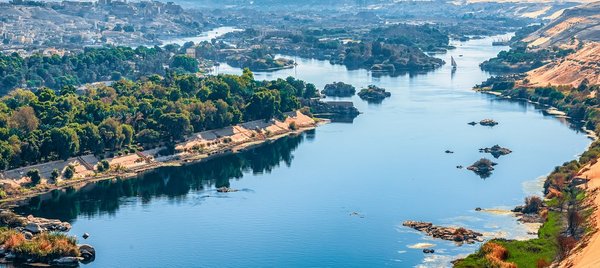- Share this article
- Subscribe to our newsletter
Benefits from the Nile’s Grand Ethiopian Renaissance Dam
Coordinated filling and operation of the Grand Ethiopian Renaissance Dam (GERD) increases economic benefits and resilience in the riparian countries, according to researchers from the Humboldt University Berlin, Germany. These are the results of a study published in Nature Communications in September 2021.
Hydropower dams are often viewed critically. Only recently, experts from the World Wide Fund for Nature (WWF) and the Senckenberg – Leibniz Institution for Biodiversity and Earth System Research (Senckenberg Gesellschaft für Naturforschung [SGN]) pointed out that hydroelectric dams harm biodiversity and contribute little to climate change mitigation (Rural 21 reported).
In the Nile Basin region, eleven African countries are economically dependent on the river, albeit differently. In recent years, the water infrastructure in the Eastern Nile has seen significant changes, with more dams being constructed in upstream countries, the most recent of which is the GERD.
In 2011, Ethiopia unilaterally started its construction. By July 2020, building operations were around 75 per cent completed, and Ethiopia began the initial filling of the dam’s reservoir. This dam, set to be the largest in Africa in terms of power capacity, continues to cause disagreement between Ethiopia, Sudan and Egypt on filling and operation strategies.
The researchers looked at the dynamic interactions between the Nile’s hydrology and infrastructure and Egypt’s economy. The detailed analysis of the Nile and the GERD shows that in the majority of the hydrologic scenarios examined, coordinated filling and operation of the GERD increases the total electricity generation from both the GERD and the Nile system, sustains Sudan’s water consumption, decreases Egypt’s irrigation water deficits, and increases Egypt’s gross domestic product (GDP) and other macroeconomic indicators compared to an approach that resembles a recently negotiated proposal.
The Nature Communications publication presents a new, generic, co-evolutionary hydro-economic modelling framework that captures the dynamic interactions between a river’s hydrology and infrastructure and the macroeconomy of any of the river’s riparians. This multi-sector dynamic modelling framework is used to examine a coordinated operating strategy for filling and operating the GERD on the Nile River.
The research team argues that seeking a technically flexible and legally amendable agreement on GERD initial filling and long-term operation could build trust between Ethiopia, Sudan, and Egypt and make negotiations on the more contentious water allocation and management issue more likely to succeed. The coordinated operation strategy described in the research could be a positive step on this negotiation pathway and help foster a spirit of “neighbours looking out for each other”.
(Humboldt University Berlin/ile)
Read more at the Humboldt University of Berlin website





Add a comment
Be the First to Comment